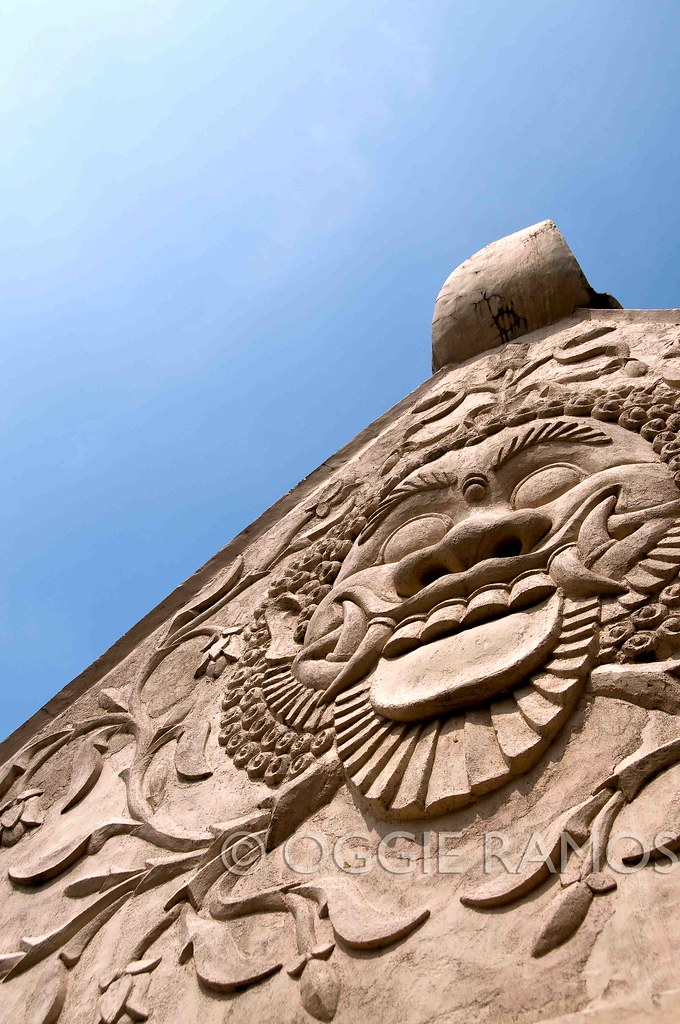 |
| Barong and blue sky at the Water Garden |
One of the most obvious attractions of Jogjakarta is the walled city of Kraton, the royal residence. If Jogja is considered as among the best-preserved and most appealing cities in all of Java, the royal residence of its first family, the Hamengkubuwono, is its heart. Sultan Hamengkubuwono I, known as Mangkubumi, held court here in 1755, building the new capital for 37 years. It was in 1946 when the capital of the Republic of Indonesia was moved to Jakarta but Kraton remained to be the royal residence. It is now occupied by the current sultan, Hamengkubuwono X.
Peeking at the Tamansari. Visitors to Kraton usually enter through the northern gates passing through the busy town square, the Alun-alun Utara. Instead, we went straight to the Tamansari or Water Garden of Mangkubumi, west of the Sultan's Palace. (Open daily 9am-3pm; Entrance fee:Rp8,000/Php44/US$.88). Designed in the 18th century as an amusement park, it features a series of pools and fountains. Some references we read go on to say that it is here where the Sultan takes a more than cursory look at his wives enjoying the waters with little or no clothing. 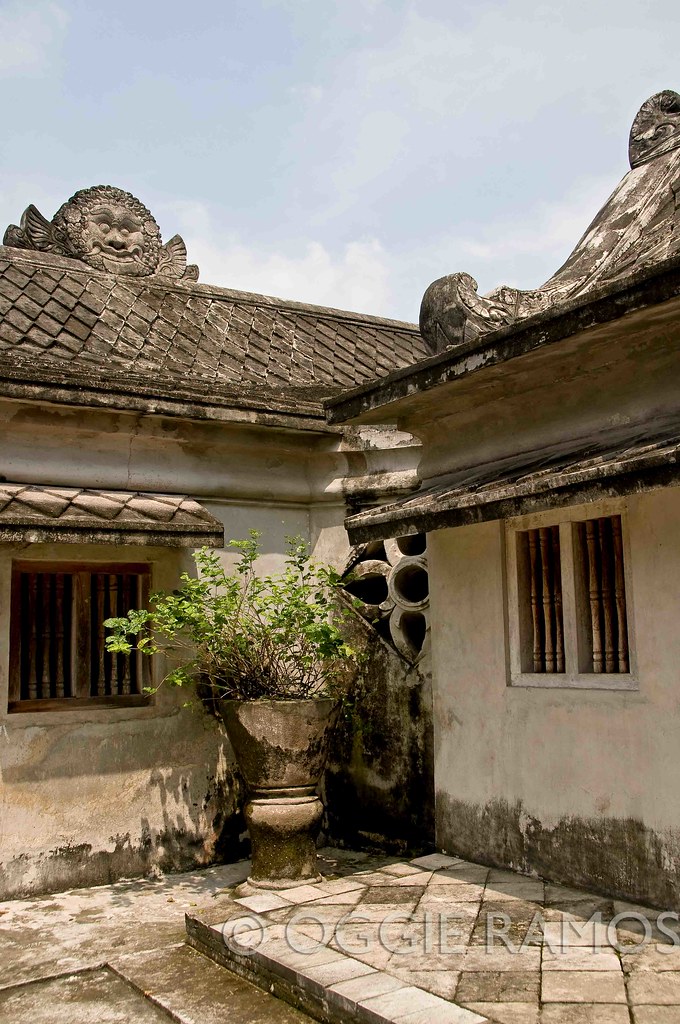 |
| Interesting roof and wall details |
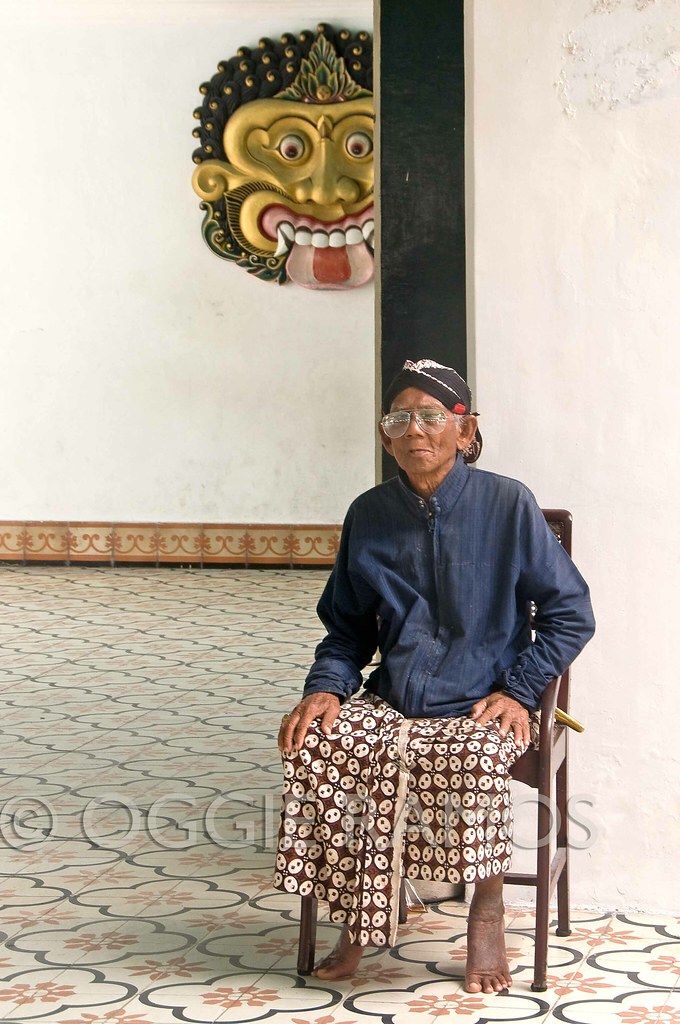 |
| Barong and man at the doorway at the Sultan's Palace |
 |
| Lamppost detail |
Info: Entrance fee: Rp12,000/Php60/US$1.33 plus Rp1,500/Php7.50/US$.16 for camera fee • Main palace open Mon-Thu, Sat-Sun, 8:30am-3pm; Fri: 8am-1pm
Treating ourselves to some candi. On our third morning, we took an unplanned detour to the highest-placed temple in Jogja -- Candi Ijo. On the road south of Prambanan, there's a turn on the road that heads to Ratu Boko. At a small intersection, a signpost indicated leftwards going to Ratu Boko and right heading to Candi Ijo. After passing through green fields and rough roads that made our Avanza groan, and gaining elevation that made my ears pop, we see the temples.
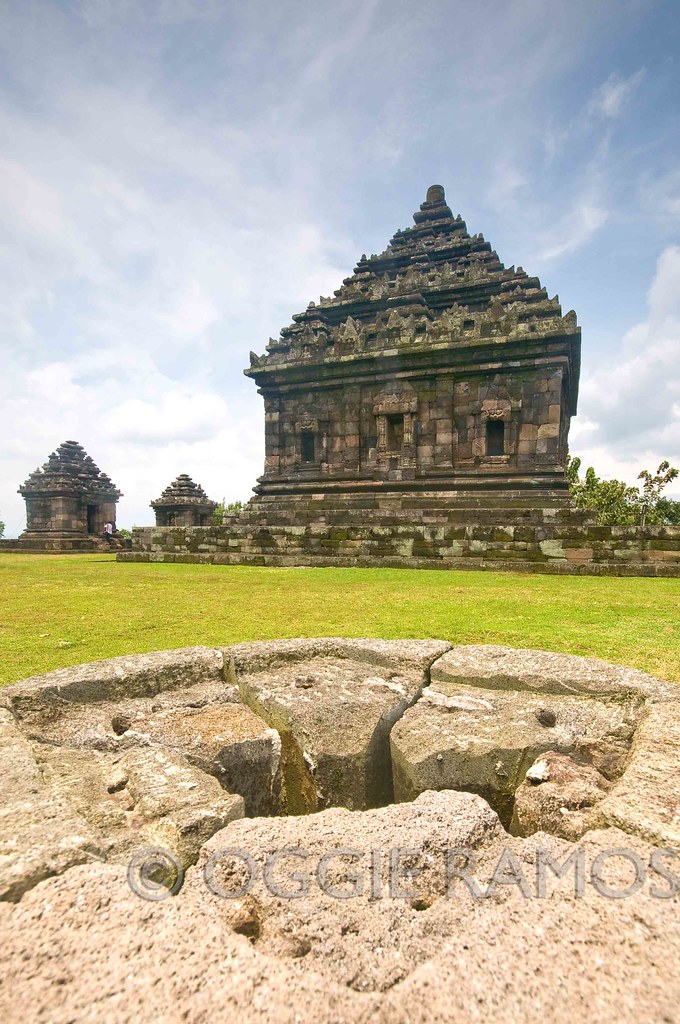 |
| Candi Ijo on a sunshiny day |
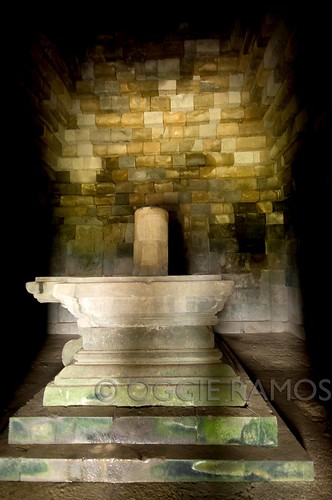 |
| Lingam-Yoni |
Much of the temples at the lower terrace lie in ruins although at the top terrace, the temples still stand tall. The temple at the center has a lingam-yoni, the male and female form reunited. The other structures have interesting bas-relief not just on their walls but also the roofs. In one small temple, there was even bio-luminescent vegetation growing on the floor.
Because it was the early part of the day and due to the relative remoteness of this candi (temple), we had the place almost to ourselves. Had we had the whole morning (or day) to devote here, we would likely admire the breathtaking view of the Prambanan plains from this elevation, the quiet only disturbed by the chirping of the birds and intermittent breezes that rustle through the trees.
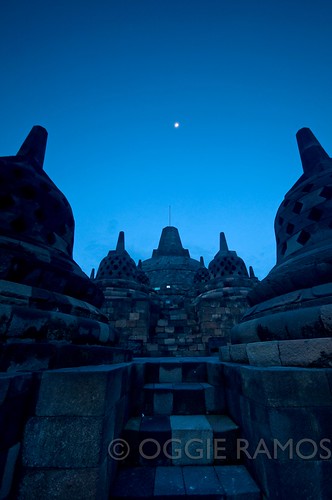
Info: No fees are charged at Candi Ijo; instead, guests are encouraged to register at the community hall at the top of the stairs; donations are most welcome
Next in Lagalog's 7-Part series on Indonesia:
Part 5 -- Borobodur: Skipping the sunset, missing the sunrise and earning karmic points
